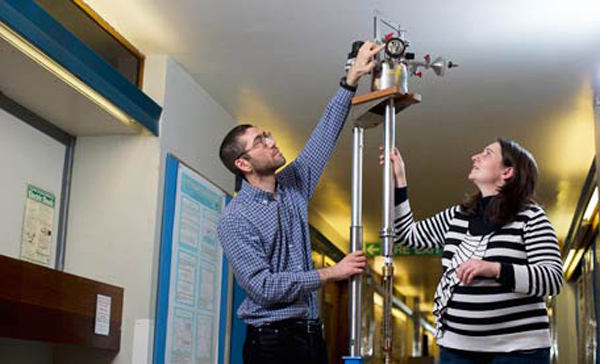'Wearable' Tech One Step Closer To Reality After Material ‘Breakthrough’

Imagine having a smartphone interface on your sleeve, or a touch-screen MP3 player carefully woven into the fabric of your t-shirt. Wearable technology is getting ever nearer to becoming reality after a team of researchers from the University of Exeter revealed an innovative new material adapted from graphene that they’re calling ‘GraphExeter’ (you see what they did there?) and what they claim is, being just one atom thick, “the most transparent, lightweight and flexible material ever for conducting electricity.”
According to the researchers’ report, GraphExeter is much more flexible than the main conductive material currently used in electronics, indium tin oxide. What’s more, ITO is becoming increasingly expensive and is a finite resource, expected to run out in 2017.
The new material was produced by a team from the University of Exeter’s ‘Centre for Graphene Science’ and involved layering molecules of ferric chloride between two layers of graphene in order to enhance the electrical conductivity of graphene in its initial form, without affecting the material’s transparency.
the electrical conductivity of graphene in its initial form, without affecting the material’s transparency.
What this adds up to is the strong possibility of gadgets adorning our clothing and fashion accessories, whereas other common household surfaces (windows, mirrors, tabletops) could also be made ‘smart’ with computerised interactive features. The team also highlighted that the material’s transparent properties over a wide light spectrum means that it could also enhance the efficiency of solar panels by more than 30%.
And if all that wasn't enough, the team are now hard at work developing a spray-on version of the material which, if successful, could be applied straight onto fabrics and other surfaces. Lead researcher Dr Monica Craciun talked up the material's future, citing how “GraphExeter could revolutionise the electronics industry. It outperforms any other carbon-based transparent conductor used in electronics and could be used for a range of applications, from solar panels to ‘smart’ teeshirts. We are very excited about the potential of this material and look forward to seeing where it can take the electronics industry in the future.”
Richard Birkett
Source: The University of Exeter

